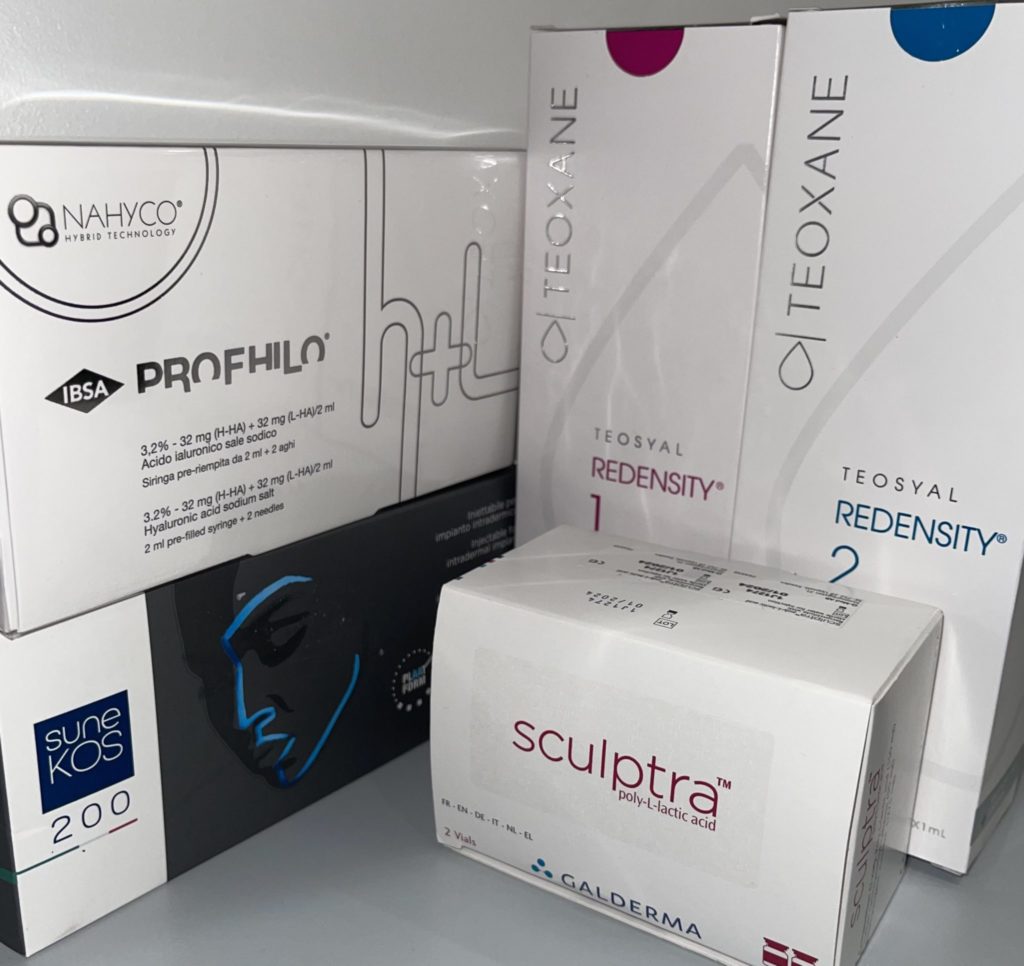Recognizing the Significance of Biostimulators in Modern Dermatology: Just How They Add To Skin Repair Service and Rejuvenation
The emergence of biostimulators in modern-day dermatology notes a critical shift in methods to skin fixing and rejuvenation. These agents not just promote the natural production of collagen and elastin yet also supply a non-invasive choice to traditional treatments, appealing to a varied series of patients. As we discover their mechanisms of action and clinical applications, it ends up being obvious that their potential extends far beyond simple visual appeals. However, the effects of their use in skin-related method raising important concerns about effectiveness, safety and security, and future advancements that warrant more assessment.

What Are Biostimulators?
Biostimulators are innovative therapeutic representatives used in dermatology to boost the skin's regenerative procedures. These compounds, which can include a selection of normally derived substances, are created to boost collagen and elastin manufacturing, ultimately promoting skin flexibility and firmness. Typically utilized biostimulators include polylactic acid (PLA) and calcium hydroxylapatite, each of which has distinct buildings contributing to skin rejuvenation.
The device of activity of biostimulators focuses on their ability to turn on fibroblasts, the cells in charge of generating important extracellular matrix components. By launching a cascade of biological responses, biostimulators not only enhance the structural honesty of the skin but likewise assist in recovery and fixing. This characteristic makes them particularly beneficial in dealing with different dermatological conditions, consisting of creases, drooping skin, and scars.
Biostimulators are generally carried out through minimally invasive procedures, supplying a less intrusive choice to conventional surgical treatments. Their steady results, which establish with time as collagen synthesis rises, supply a natural-looking enhancement. As the field of dermatology proceeds to advance, biostimulators stand for an appealing avenue for achieving younger and invigorated skin via advanced healing techniques.
Advantages of Biostimulators
One of the key advantages of biostimulators is their capability to provide natural-looking outcomes that improve skin restoration without the need for intrusive surgical treatment. These treatments boost the body's own collagen manufacturing, bring about steady and lasting improvements in skin structure, flexibility, and total look. Unlike conventional fillers, which can sometimes develop a synthetic look, biostimulators advertise a more natural enhancement, permitting for refined outcomes that age beautifully.
Additionally, the adaptability of biostimulators makes them suitable for different skin types and issues. They can address issues such as great lines, drooping skin, and uneven appearance, making them an important alternative for individuals seeking comprehensive skin rejuvenation. Moreover, biostimulators often require marginal downtime, allowing individuals to resume their day-to-day tasks shortly after treatment.
An additional notable advantage is the long life of results, as the effects can last longer than those of traditional aesthetic procedures. This lasting end result is credited to the steady collagen synthesis that proceeds even after the initial treatment stage. Inevitably, the unification of biostimulators right into dermatological methods offers individuals a reliable and reliable option for accomplishing vibrant and rejuvenated skin.
Device of Action
Boosting the body's natural processes, biostimulators function largely through devices that motivate collagen production and tissue regrowth. Upon management, biostimulators start a waterfall of biological responses that trigger fibroblasts-- cells responsible for collagen synthesis.
Additionally, biostimulators can regulate inflammatory feedbacks, producing an optimum atmosphere for healing. By promoting angiogenesis, they boost blood flow to the cured area, ensuring that nutrients and oxygen are efficiently provided to support cellular tasks. The progressive launch of growth elements from biostimulators also plays a vital function, as these elements signal nearby cells to multiply and move, facilitating tissue repair service.
In enhancement to boosting collagen, Full Article biostimulators might influence elastin manufacturing and glycosaminoglycan synthesis, contributing to boosted skin appearance and hydration. The synergistic effects of these mechanisms result in a recognizable rejuvenation of the skin with time, developing biostimulators as an important tool in modern-day dermatological therapies.
Applications in Dermatology
The systems underlying the action of biostimulators have led the way for their varied applications in dermatology. These ingenious agents are mainly utilized for skin rejuvenation, wound healing, and the therapy of numerous dermatological problems. By promoting collagen and elastin manufacturing, biostimulators successfully improve skin elasticity and appearance, making them very useful in aesthetic treatments targeted at decreasing fine lines and creases.
In medical setups, biostimulators are used to increase the healing procedure of persistent wounds, such as diabetic abscess and pressure sores. Their ability to promote angiogenesis and improve cellular metabolic rate adds to enhanced cells repair service and regeneration. Furthermore, they play a substantial role in treating skin laxity and volume loss related to aging, using a non-surgical choice to typical fillers.
In addition, biostimulators have actually revealed guarantee in addressing various skin disease, including acne scars and melasma, by promoting skin makeover and lowering pigmentation irregularities. As a functional device in the skin-related toolbox, biostimulators eventually supply practitioners with reliable options for improving both the visual and practical aspects of skin health and wellness. Their diverse applications remain to expand, demonstrating their value in contemporary dermatology.
Future of Biostimulators
What advancements read the article exist in advance for biostimulators in dermatology? The future of biostimulators is positioned for significant advancement, driven by continuous research study and technical technology. Emerging biostimulatory representatives, such as unique peptides and development variables, are anticipated to enhance the effectiveness of existing therapies, using more targeted and powerful alternatives for skin restoration and fixing.
Additionally, improvements in shipment systems are expected to boost the accuracy and efficiency of biostimulators. Microneedling and nanotechnology might promote deeper penetration of these agents, optimizing their healing potential while minimizing adverse effects. Such developments will likely cause tailored treatment regimens tailored to individual skin kinds and problems.
Additionally, the combination of biostimulators with regenerative medication techniques, consisting of stem cell treatment, is anticipated to additional increase their applications - biostimulators. This harmony could boost tissue regeneration, offering solutions for even more facility dermatological issues, such as scarring and aging
As professional trials proceed to verify the safety and security and effectiveness of brand-new biostimulators, skin specialists will have an Get More Info increasingly varied selection of choices at their disposal. This development declares a transformative period in dermatology, emphasizing effective and alternative skin care services.

Conclusion
Biostimulators stand for a transformative development in dermatology, successfully contributing to skin fixing and rejuvenation. As continuous study unravels, the prospective applications of biostimulators might expand, strengthening their duty in the future of dermatological therapies and improving total skin wellness and vigor.
The appearance of biostimulators in contemporary dermatology notes an essential shift in techniques to skin repair and renewal.Biostimulators are cutting-edge restorative agents used in dermatology to boost the skin's regenerative processes. They can address problems such as great lines, drooping skin, and irregular structure, making them a valuable option for people looking for extensive skin renewal (biostimulators).In addition, biostimulators have shown pledge in resolving numerous skin problems, consisting of acne marks and melasma, by promoting skin renovation and minimizing pigmentation abnormalities.Biostimulators represent a transformative improvement in dermatology, successfully adding to skin repair and renewal
 Barret Oliver Then & Now!
Barret Oliver Then & Now! Brooke Shields Then & Now!
Brooke Shields Then & Now! Lacey Chabert Then & Now!
Lacey Chabert Then & Now! Morgan Fairchild Then & Now!
Morgan Fairchild Then & Now! Nicki Minaj Then & Now!
Nicki Minaj Then & Now!